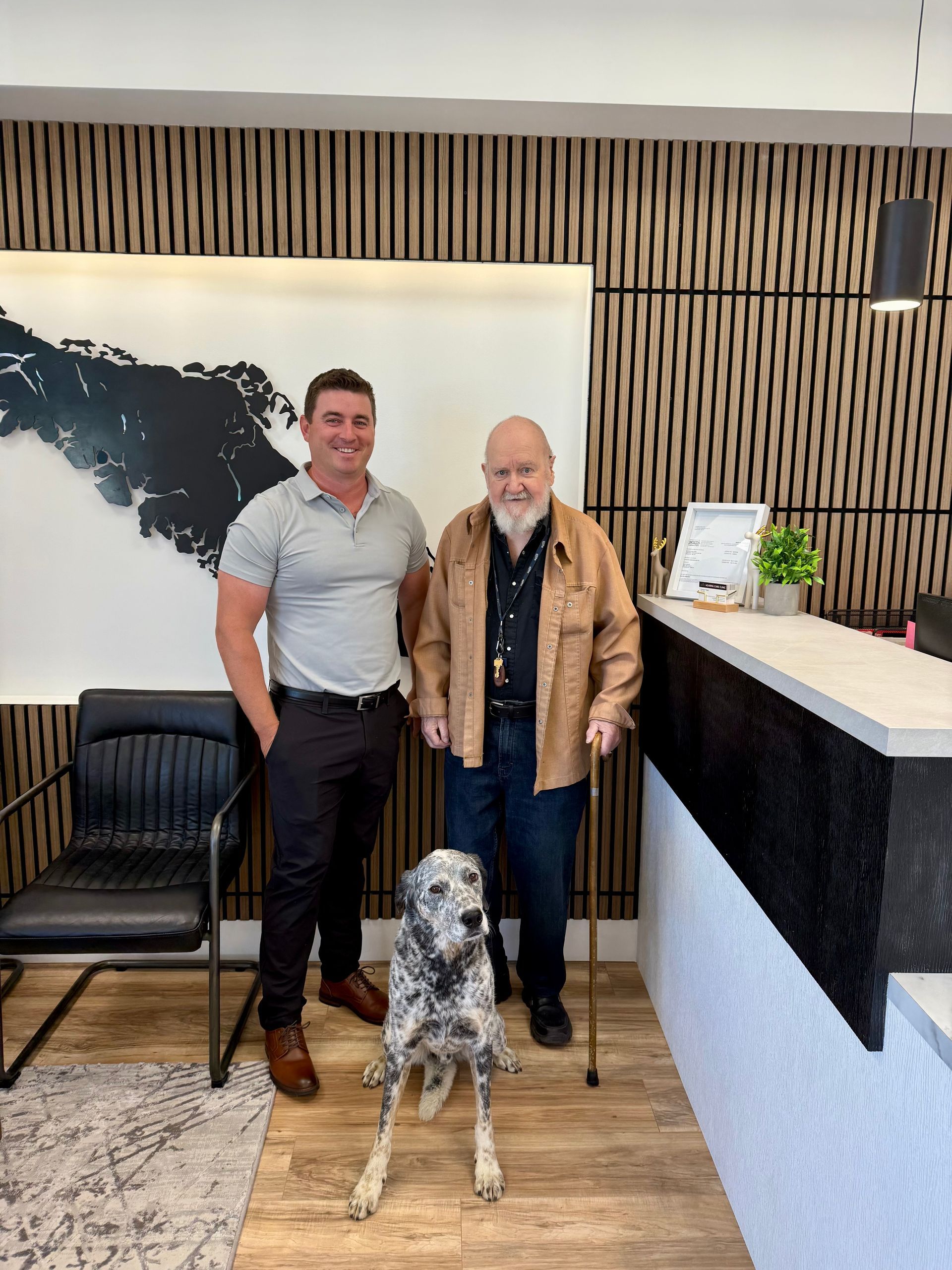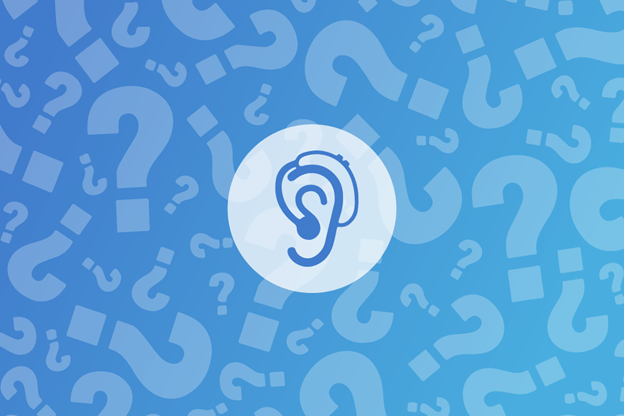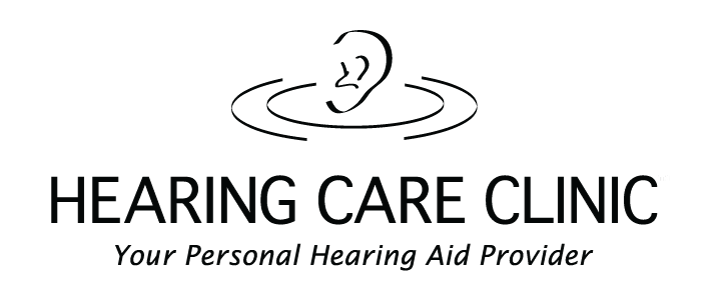Top hearing aid myths
Top Hearing Aid Myths
Top hearing aid myths
Hearing aids are among the most misunderstand technologies. They have evolved over the past few decades to become incredibly sophisticated and capable of automatically analyzing the surroundings to provide sound that is balanced and natural – all this in a tiny size that is still easy to use but barely noticeable to onlookers.
Hearing aids are among the most misunderstand technologies. They have evolved over the past few decades to become incredibly sophisticated and capable of automatically analyzing the surroundings to provide sound that is balanced and natural – all this in a tiny size that is still easy to use but barely noticeable to onlookers.
Just consider how cell phones have evolved in the past few decades. Hearing aids have undergone the same incredible pace of innovation and advancement. But these miracles of technology still face many myths.
These are the top hearing aid myths that we often hear.
Hearing aids are bulky and noticeable
This is true for older styles of hearing aids, when they relied on analog equipment or before digital technology was as tiny as it is today. There are now hearing aid styles that are hidden from onlookers and barely noticeable – if at all.
As exciting as these devices are, some people find them not ideal because they can be easier to misplace. That’s why we carry a range of hearing aids in a mix of styles and sizes.
This is true for older styles of hearing aids, when they relied on analog equipment or before digital technology was as tiny as it is today. There are now hearing aid styles that are hidden from onlookers and barely noticeable – if at all.
As exciting as these devices are, some people find them not ideal because they can be easier to misplace. That’s why we carry a range of hearing aids in a mix of styles and sizes.
They are for people with extreme hearing loss
Hearing aids offer remarkable opportunities for individuals with extreme hearing loss, and these opportunities are also available for people with less severe hearing challenges. For some, hearing aids offer clarity in noisier environments like restaurants. For others, hearing aids make it easier to have conversations with family and friends.
Everyone is different – and their hearing is no exception. We assess your hearing when you visit Hearing Care Clinic and then let you know how hearing aids might improve your hearing.
Hearing aids offer remarkable opportunities for individuals with extreme hearing loss, and these opportunities are also available for people with less severe hearing challenges. For some, hearing aids offer clarity in noisier environments like restaurants. For others, hearing aids make it easier to have conversations with family and friends.
Everyone is different – and their hearing is no exception. We assess your hearing when you visit Hearing Care Clinic and then let you know how hearing aids might improve your hearing.
Hearing aids will make me look old
Hearing challenges impact people of all ages, so this myth has had negative consequences on younger individuals who require assistive devices.
Modern hearing aids are available in styles that fit behind the ear or even in the ear canal, so you can find a discrete pair that few will even notice.
Hearing challenges impact people of all ages, so this myth has had negative consequences on younger individuals who require assistive devices.
Modern hearing aids are available in styles that fit behind the ear or even in the ear canal, so you can find a discrete pair that few will even notice.
Hearing aid technology is expensive
Like all technology, hearing aids are available in a selection of functions and styles. Consider the televisions available at your local electronics store: they come in all sizes with different technologies and features. Some people value large, high definition televisions, while others only have the space to fit a tiny device in their home. It is up to the individual to decide which device will work best for their viewing needs, home and budget.
It’s the same for hearing aids. We carry models with a variety of functions and styles, and we will help you decide which device will match your hearing difficulties, budget and preferences.
Like all technology, hearing aids are available in a selection of functions and styles. Consider the televisions available at your local electronics store: they come in all sizes with different technologies and features. Some people value large, high definition televisions, while others only have the space to fit a tiny device in their home. It is up to the individual to decide which device will work best for their viewing needs, home and budget.
It’s the same for hearing aids. We carry models with a variety of functions and styles, and we will help you decide which device will match your hearing difficulties, budget and preferences.
They are not covered by benefits, insurance or financial support
Hearing aids are often not a discretionary device. They are necessary for health and well-being, so there are a number of options available to help fund hearing aids. You can see a few of the hearing aid funding options available in British Columbia, or you can visit our clinics to discuss the personalized options that can help cover the costs.
All hearing aids are the same
We are always excited to talk about the latest in hearing aid technology because the features available range from seamless integration with other devices to apps on your smartphone. Hearing aids are among the most advanced technology.
For you, this means that there are hearing aids that will succeed in improving your hearing while fitting into your work and lifestyle. It’s our job to recommend the options that are the best fit.
We are always excited to talk about the latest in hearing aid technology because the features available range from seamless integration with other devices to apps on your smartphone. Hearing aids are among the most advanced technology.
For you, this means that there are hearing aids that will succeed in improving your hearing while fitting into your work and lifestyle. It’s our job to recommend the options that are the best fit.
Hearing aids sound unnatural
Hearing aids are incredibly tiny computers that process noise and output sound that is attuned to your ears. This means that sounds aren’t just amplified, they are automatically adjusted so the balance is natural.
Hearing aids are incredibly tiny computers that process noise and output sound that is attuned to your ears. This means that sounds aren’t just amplified, they are automatically adjusted so the balance is natural.
They’re annoying to use
For such small packages, hearing aids are intuitive and simple to operate. As the electronics and digital technologies have improved, so have the interfaces to operate them. Many hearing aids automatically adjust to your surroundings, so you will always hear the sounds you want without having to toggle any switches or adjust any levels. You’ll forget you are even wearing hearing aids. And many hearing aids have internal batteries that can be recharged while you sleep, so you don’t have to fiddle with tiny batteries.
For such small packages, hearing aids are intuitive and simple to operate. As the electronics and digital technologies have improved, so have the interfaces to operate them. Many hearing aids automatically adjust to your surroundings, so you will always hear the sounds you want without having to toggle any switches or adjust any levels. You’ll forget you are even wearing hearing aids. And many hearing aids have internal batteries that can be recharged while you sleep, so you don’t have to fiddle with tiny batteries.
Hearing aid wearers always complain about their hearing aids
When hearing aids don’t fit or function properly, they can be annoying to use. Fortunately, there’s an easy solution: we’ll make sure your hearing aids fit and function through regular fittings and follow-up appointments. We want your hearing aids to never be annoying or uncomfortable.
When hearing aids don’t fit or function properly, they can be annoying to use. Fortunately, there’s an easy solution: we’ll make sure your hearing aids fit and function through regular fittings and follow-up appointments. We want your hearing aids to never be annoying or uncomfortable.

The Gift of Hearing: Rediscovering Life Through Sound Being able to clearly hear the world around you is a gift that becomes even more treasured as it diminishes. Many of us take for granted the ability to clearly hear all the elements of a song or to hear what a friend says the first time around. However, once these abilities fade, we realize just how lucky we were to have a fully functional sense of sound. At Hearing Care Clinic, we understand just how critical being able to hear is, which is why we’ve developed the Gift of Hearing program to help bring donated hearing aids to those in the community who may otherwise be unable to obtain them. Even more powerful, though, is seeing all the areas of someone’s life—both physical and mental—that improve when they are fitted with a hearing aid. Kenneth R. was fit with a hearing aid, and after one month, we checked in to see just how his life has improved—it’s no surprise that it’s not just his hearing that was affected. Easier Communication Gone are the days of asking people to repeat themselves. Not only did Kenneth note that his improved hearing, thanks to the hearing aid, is easier on those he converses with, but it also allows him to feel less embarrassed. By knowing who is talking and what is being said, he feels less ‘on edge’ when talking to others, leading to more relaxed conversations and greater self-confidence. We rely heavily on our senses, so when your hearing starts to worsen, you can experience strain in an area that once came easy to you. With a hearing aid, however, the ease of conversing returns, and Kenneth says that he feels as though he’s “10 years younger with a new lease on life.” Beyond the self-confidence boost, Kenneth notes, “There’s less of a chance of miscommunication.” By knowing what is said, Kenneth is now able to give a direct response whereas, before, he would guess at what was said and, more often than not, give a wrong answer. Re-Discovering Everyday Sounds Hearing diminishes gradually over years, which means you may not recognize just how much you’re missing out on. Kenneth, though, realized just how many layers of sound he had been missing once his hearing was restored. He was able to re-discover everyday sounds that had passed him by before, such as the musical instruments used in a song. Rather than hear only the melody, he can now hear all the instruments. This translates to his time spent at church, where he can now hear the minister and the response. “It used to come across as ‘wawa,’ like Charlie Brown,” he explains, referencing the monotonous tone used by adults in the cartoon, “But now I can hear.” Rejoining the Community Poor hearing can be isolating, but with the help of a hearing aid, Kenneth no longer feels separated from everyone else due to difficulty joining in with a conversation. For Kenneth, the hearing aid, and the subsequent restoration of his hearing, feels like a Godsent. On the Fence About a Hearing Test? Kenneth’s Advice For those who are on the fence about undergoing a hearing test, Kenneth recommends going to get tested—don’t wait. He wishes that he had gone sooner rather than spend years living with the stress of hearing challenges. The sooner you go, he notes, the sooner you can have better and fuller days, like his are now. As for where to go, Kenneth recommends seeing a proper professional. “I am so happy to have found a professional that is a small, family-run business. I feel as though they have taken the time to test and explain what’s going on.” Our thorough care left Kenneth impressed, and we’re sure to leave you just as satisfied. Reach out today to schedule a no-pressure hearing test and discover just how much of a gift hearing well truly is.

Can you hear everything you should be able to? That can be a hard question to answer. Hearing loss is typically a gradual decline, meaning we don’t often notice that we’re having a harder time hearing. It’s different from breaking a bone where you can very quickly see the difference before and after the break—with hearing loss, your hearing declines over years, making it hard to compare your hearing level today to what it was a decade ago. Even more, once you get a hearing aid, you may find that you can hear better, but that doesn’t necessarily mean you’re hearing at the level you should be at. This is why we prioritize hearing aid verification at the Hearing Care Clinic : to ensure you’re hearing all the sounds you should be able to hear. Signs You Should Get Your Hearing Checked You may not be able to tell how bad your hearing has gotten—that’s what our job is—but there are some signs to keep in mind that it might be time for a hearing test . It sounds like people are mumbling or not speaking clearly House guests comment on the loud volume of your TV Your friends or family get annoyed because you mishear them It’s a challenge to understand conversations You often have to ask people to repeat themselves It’s hard for you to hear if there’s a lot of background noise (such as traffic or restaurant chatter) Another sign that you may benefit from a hearing test is if you hear a persistent ringing, roaring, or buzzing sound, which could be tinnitus . This phantom sound could be a sign of hearing loss. If you suspect that you have hearing loss, our no-pressure hearing tests can help you validate your concerns and offer guidance for your next steps to restore this key sense, whether it’s wax removal or a hearing aid. How Do I Know If My Hearing Aid is Working? Having a hearing aid is one thing, but having a hearing aid that truly restores your hearing is something else—we understand the difference at Hearing Care Clinic, which is why we take the time to verify hearing aid settings for every hearing aid we install. We use the Verifit® 2 system from Audioscan to verify all the hearing aids we place, which comes with many features and benefits. The hearing aid installation process begins with the placement of a tube, also known as a probe, into your ear. The probe is used to obtain real-ear measurements, which measure what is coming out of the hearing aid at the level of the eardrum—it’s a way to verify that what you should hear is truly what you’re receiving as an input. Once the tube is in place, the hearing aid is inserted on top. From there, we test the hearing aid to ensure it’s working as expected. Speechmap® The Verifit 2 offers Speechmap, a guided workflow that aids hearing instrument verification by verifying how well you can hear certain sounds and how comfortable it is for you to hear these sounds. With this information, we can adjust the hearing aid as needed to confirm you’re hearing what you should be hearing and that the sound coming through the hearing aid isn’t uncomfortable. By taking the time to make these adjustments, we ensure that your hearing aid is something you continue to use and are completely satisfied with. What Happens If I Still Can’t Hear with a Hearing Aid? You’ve had your hearing aid fit, and all the tests have been completed, but maybe a few months down the line, you’re starting to feel like everyone around you is mumbling again. Maybe not as bad as before you received a hearing aid, but enough so that you are still asking people to repeat themselves. Things can change over time. A hearing aid with settings that worked perfectly before may need adjustments to keep up, and that’s okay. In some cases, you may become acclimated to the hearing aid, so you need to change the programming as time goes on. At Hearing Care Clinic, we understand that hearing aid care is not a one-and-done operation—it’s something that can take multiple adjustments . Maybe you felt that the hearing aid was at a comfortable setting in the clinic, but after a few weeks, something doesn’t seem right. Or, perhaps after a few months, your hearing has worsened, and so you need to make adjustments. Sometimes, the hearing aid might malfunction altogether, requiring a replacement or repair. In each of these cases, your course of action should be the same—reach out to the clinic where you received your hearing aid. At Hearing Care Clinic, we will undergo the verification and validation process for the hearing aid again and make adjustments until you’re back to feeling like the hearing aid is working as it should. Needing these adjustments is normal, especially as you get used to having a hearing aid, so don’t hesitate to reach out so that we can make sure your hearing aid is operating as it should . Do You Hear That? It’s Your Sign to Get Started. If you feel as though your hearing has declined over the years and find yourself asking people to repeat themselves more often than not, it may be time to inquire about a hearing aid. Call Hearing Care Clinic today to schedule a no-pressure hearing test . We’ll see where your hearing levels are and then offer unbiased recommendations on where to go from there. In the end, the decision to take care of your hearing, and how you want to go about that, is up to you. References Jorgensen LE; and; Novak M. Verification and Validation: Just the Standards. Semin Hear. 2022 Jul 26;43(2):85-93. doi: 10.1055/s-0042-1749208. PMID: 35903074; PMCID: PMC9325086. Jorgensen LE. Verification and validation of hearing aids: Opportunity not an obstacle. J Otol. 2016 Jun;11(2):57-62. doi: 10.1016/j.joto.2016.05.001. Epub 2016 May 14. PMID: 29937811; PMCID: PMC6002586.

The answer to the question is not a simple “yes” or “no.” Instead, it depends on many factors including the type of hearing loss, degree of loss, impacts of the hearing loss and your daily routines and habits. Hearing aids are a common recommendation for people with hearing challenges, but they are not a universal solution.







